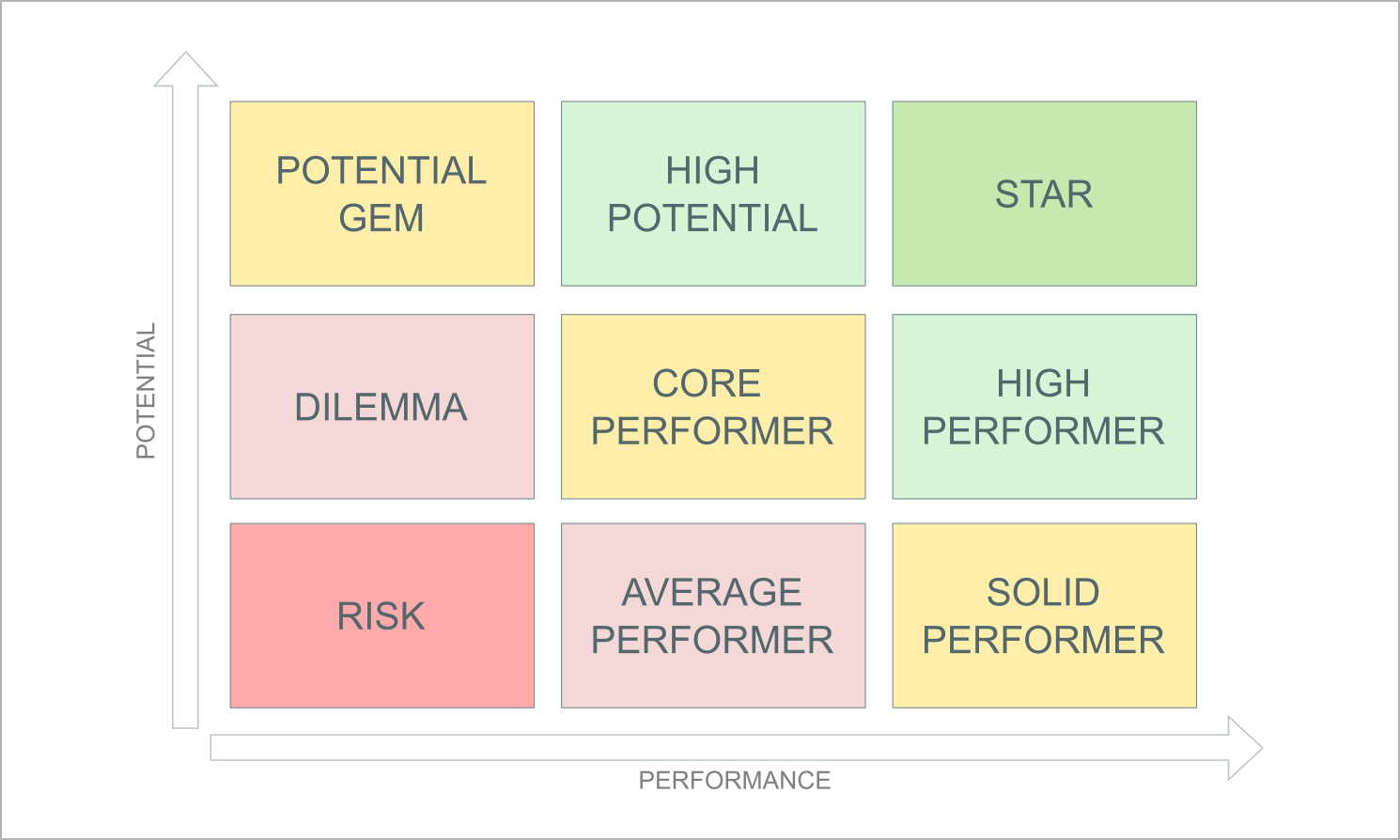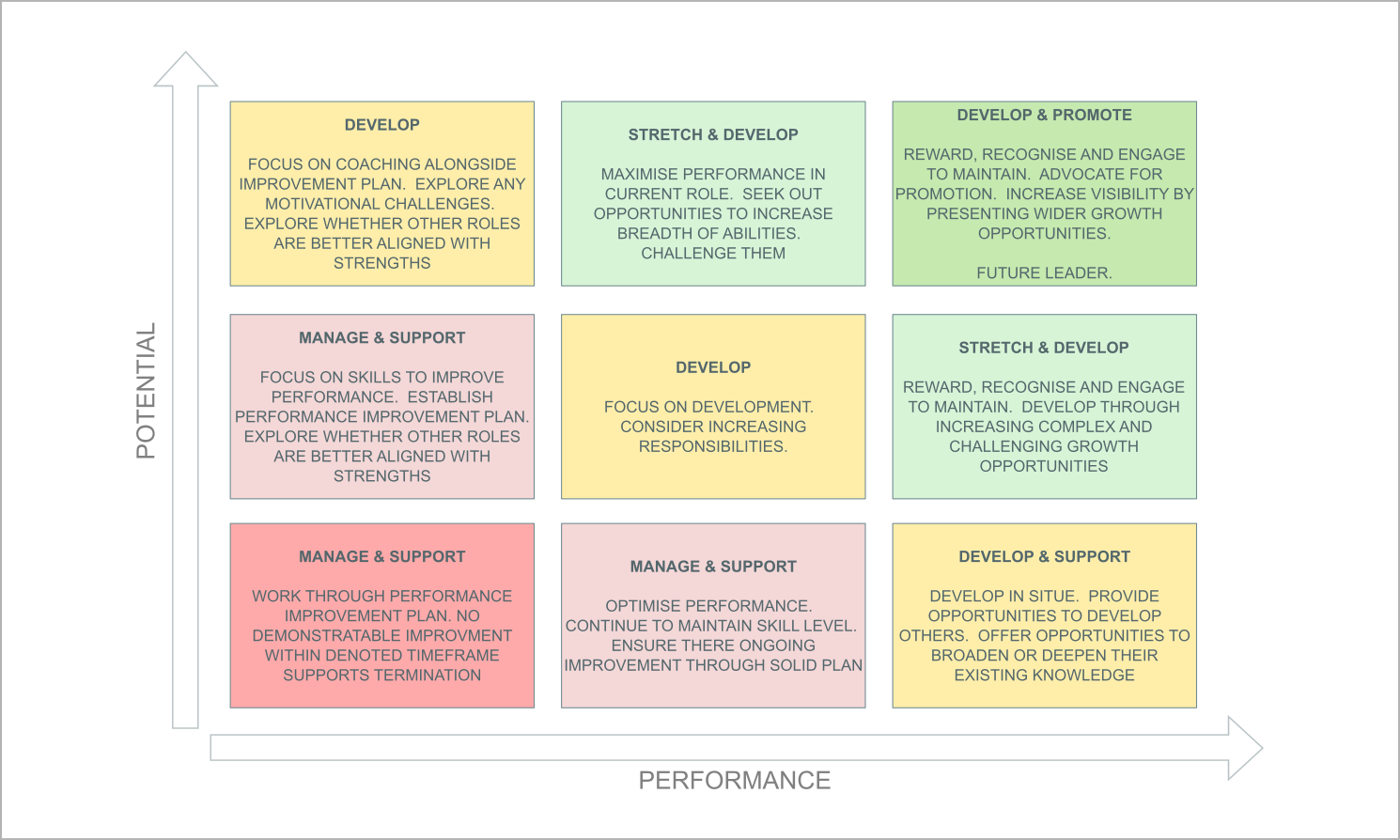Travel Tips
Lorem ipsum dolor sit amet, consectetur adipiscing elit.
People are at the very heart of every business and success relies on the development of people and the balancing of teams.
A 9-box grid is a tool that is widely used in HR to help facilitate conversations about employee development and succession planning. It is usually used to assess individuals on two dimensions: their past performance and their future potential. The horizontal rows of three boxes assess performance, and the vertical columns assess potential. Where the column and row connect makes up the box within the grid that each employee is placed in.

Approach
Low Potential / Low Performance – Manage & Support
Work through Performance Improvement Plan. Failure to deliver results within an established time frame supports termination.
Low Potential / Mid Performance – Manage & Support
Optimize performance. Continue to maintain skill level; ensure ongoing effectiveness through solid development plan.
Low Potential / High Performance – Manage & Support
Reward, recognize and maintain skill development. Involve in training and leading others while sharing institutional knowledge. Continue providing challenging opportunities to engage and retain.
Mid Potential / Low Performance – Manage & Support
Work through Performance Improvement Plan. Explore roles and assignments better aligned with strengths.
Mid Potential / Mid Performance – Develop
Focus on development. Increase performance contribution to Enhancing Results Continue to develop through assignments of greater complexity requiring increased expertise and exposure.
Mid Potential / High Performance – Stretch & Develop
Reward, recognize and engage to retain. Develop through increasing complexity of assignments. Identify specific areas for development. Seek immediate promotion. Increase visibility by representing unit on and off campus.
High Potential / Low Performance – Develop
Focus on coaching and a solid development plan. If an individual has been in the role for some time, there may be a serious issue (derailer). Assertively seek opportunities aligned with strengths while working through Performance Improvement Plan.
High Potential / Mid Performance – Stretch & Develop
Maximize performance in current role. Focus on increasing performance contribution to Enhancing Results, after which greater challenge and/or broader scope are likely. Seek opportunities to increase breadth of abilities and contributions; support growth through Experiential Learning Opportunities.
High Potential / High Performance – Develop & Promote
Reward, recognize and engage to retain. Advocate for immediate promotion, and develop for further promotional opportunities. Increase visibility by representing unit on and off campus. Challenge and provide greater scope through assignments to build skills. (These are future leaders of the organization.)What are the benefits?

What are the benefits?
Encourages dialogue
The grid is a simple, but visually powerful tool that serves as a framework for discussion about talent; encouraging important conversations that are unlikely to happen without it. It helps to identify the strengths and weaknesses in the pool, whilst giving transparency over the state of the talent across the whole company, helping to remove barriers to employee movement.
You get a fresh perspective
The grid encourages you to take a step back and view your talent pool from a wider perspective. The framework encourages a collaborative approach to the population of the grid; with this collaboration brings different view points, perspectives, etc.
Helps you plan for the future
The grid is a key tool in the succession planning process. It helps identify where and how to approach the growth of your employees. For example, people with high potential but low performance may be suffering from motivation fatigue